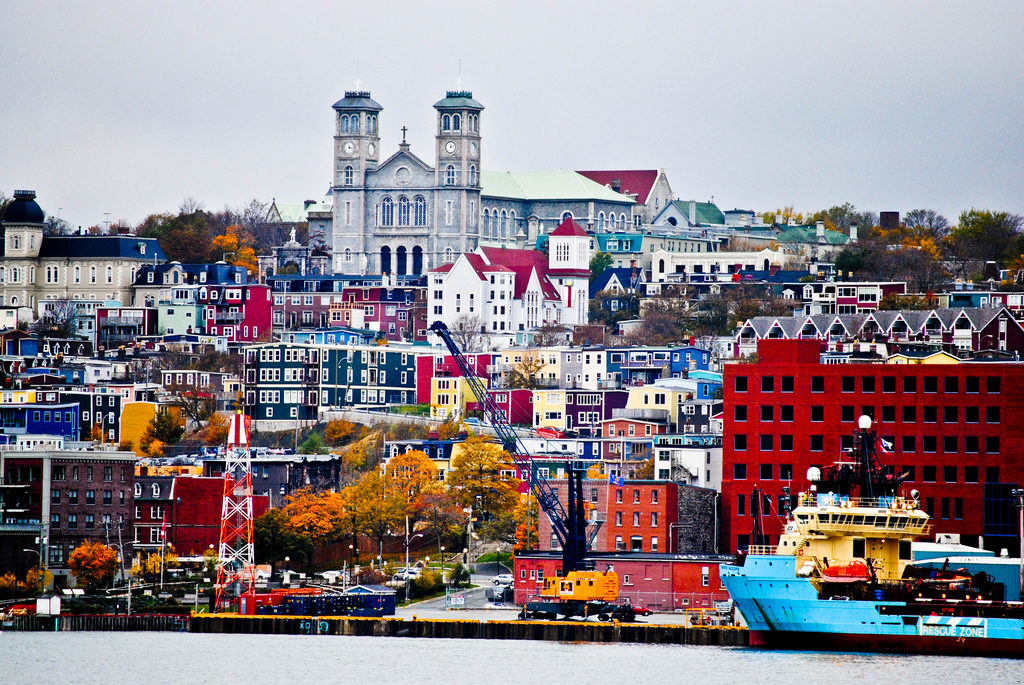This story was funded by the J-Source Patreon campaign.
By Leila Beaudoin
English literature professor Annette Staveley is a well-read woman. She spends the majority of her time engrossed in a publication. But there’s one newspaper that’s never in her home library or office—The Globe and Mail.
“We used to pick it up at the gas station,” said Staveley, who lives in St. John’s, Newfoundland.
Staveley couldn’t pick up a print edition of the Globe—or the National Post—if she wanted to.
The Globe cut its route to Newfoundland and Labrador in 2013. They also stopped shipping their papers to parts of B.C. and offered both places an online subscription in its place. The National Post cut its Newfoundland paper route in 2007. Spokeswoman Phyllise Gelfand said the rationale at the time was cost savings.
Phillip Crawley, CEO of The Globe and Mail, told J-Source there weren’t enough readers to justify the $1 million annual cost of shipping.
Crawley said they have a loyal following of online subscribers from Newfoundland.
But reading online isn’t an option for all. According to the Newfoundland and Labrador government, there are 48 communities in the province that do not have a broadband internet connection.
It’s not just the tiny towns and inlets around the bay that miss the paper. Shariq Irshad is the owner of International News, a newsstand in downtown St. John’s. He said he gets daily customers questioning why the paper is nowhere to be found. “It’s supposed to have all the international news here, but we don’t have it,” Irshad said.
“I think it’s regrettable,” said Staveley while sitting in her home office. She questions the cost-saving argument. “If it’s not economically viable here, then it shouldn’t be in the rest of the country,” she said.
She added that she feels the cut is a metaphor for a bigger problem—nationally, Newfoundland and Labrador are often neglected. Though the province is an integral part of Canada, access to news and information remains an issue, she said.
“We contribute culturally and politically, intellectually and economically to Canada and I don’t think we should be singled out,” Staveley said.
Crawley said the cuts haven’t impacted the Globe’s coverage. “Newfoundland continues to receive regular attention as part of our mandate as a national newspaper,” he said. The Globe and Mail has a correspondent who covers the Maritimes and the paper relies on freelancers and agencies to cover local events. Currently the Globe is seeking a replacement correspondent for its Halifax bureau.
The National Post does not have a correspondent stationed in Newfoundland.
“We rely on wire services for breaking news,” said Gelfand.
Gelfand said in areas where the Post does not have a journalist, it has the option of deploying a reporter to cover stories of a national interest.
[[{“fid”:”6721″,”view_mode”:”default”,”fields”:{“format”:”default”,”field_file_image_alt_text[und][0][value]”:””,”field_file_image_title_text[und][0][value]”:””},”type”:”media”,”link_text”:null,”attributes”:{“height”:960,”width”:960,”style”:”width: 100px; height: 100px; margin-left: 5px; margin-right: 5px; float: left;”,”class”:”media-element file-default”}}]]Leila Beaudoin is a Canadian Broadcaster. She’s reported in six different Canadian cities, for both the CBC and CTV news network. Currently, Leila works for NTV in St. John’s, Newfoundland.
Leila Beaudoin is a Canadian Broadcaster. She's reported in six different Canadian cities, for both the CBC and CTV news network. Currently, Leila works for NTV in St. John's, Newfoundland.

